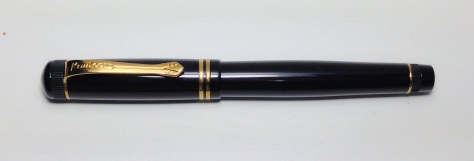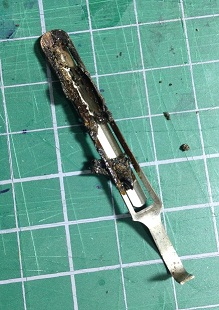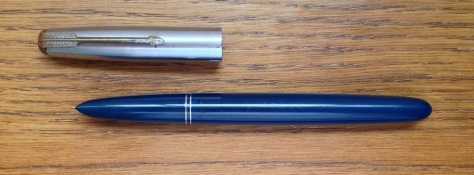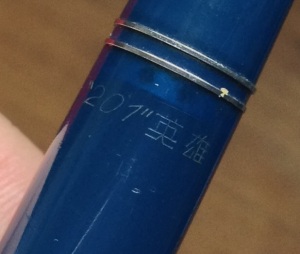Classic styling with lots of thoughtful little details.
Kaweco was no more by 1976, but the brand was revived in the mid-1990s by the Gutberlet family, who runs a firm specialising in industrial equipment for pen manufacture.
In terms of design, Kaweco’s lineup is heavily influenced by Kaweco pens of the 30’s. The Dia2 is an excellent example.

Design and Materials
I like the combination of pre-war German styling with modern elements. The Dia2 is ultimately inspired by a Kaweco Dia c.1940 (see this FPB thread for some pics — http://fountainpenboard.com/forum/index.php?/topic/67-what-is-this-kaweco-i-found/). Modern elements include: the barrel design (more on that below); logo inserts on crown and barrel end and the engraved script on the back of the cap. The knurling and gold trim at the barrel end evoke a piston-filler’s turning knob.
As the name implies, the Dia2 is the latest version of Kaweco’s earlier re-issue of the Dia. That pen followed the vintage Dia design much more closely. You can see pics here — http://thefountainpens.com/kaweco-dia/

The Dia2 has a less monolithic profile and a more slender barrel, designed such that it bulges a little in the middle before tapering towards the end (c.f. Pelikan’s Wonders of Nature models). The section is also simpler, and slightly concave.
Cap and barrel are plastic, but the pen has a bit of heft due to the metal parts. The inner cap is a metal piece, the clip brass. The inner barrel threads look like brass as well, though that piece doesn’t extend the length of the barrel. Pens like these don’t feel as cold as, say, Waterman’s usual lacquered/painted all-metal barrels.
Nib
The Dia2 comes equipped with a steel nib plated to match the trim. The nib is sized for the Kaweco Sport, a much smaller pen, and the units are interchangeable. I suppose this helps keeps costs down but the nib is visually too small relative to the rest of the pen.
Performance-wise, no problems. Smooth out of the box (which, btw, was a very attractive vintage-inspired tin 🙂 )
Filling System
Cartridge/converter, and Kaweco converters come printed with their logo — a nice touch. If you use international short cartridges, you’d probably appreciate the loose spring inside the barrel which allows you to keep a spare international short cartridge inside without having it slide up and down.
Length (capped): 13.3cm
Length (uncapped): 12.2cm


























